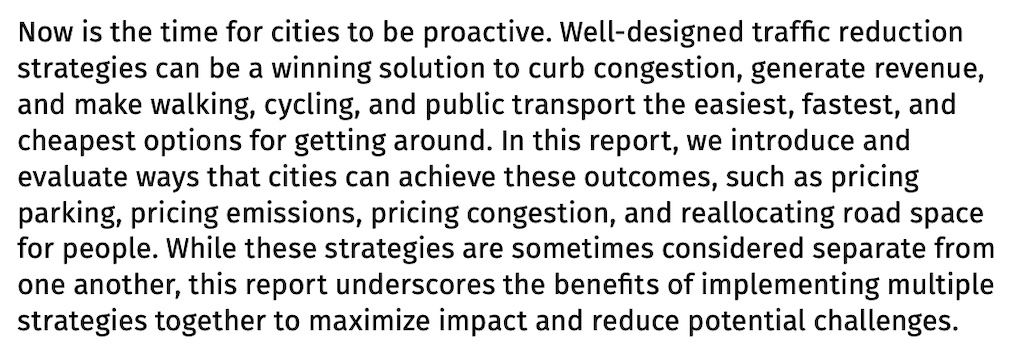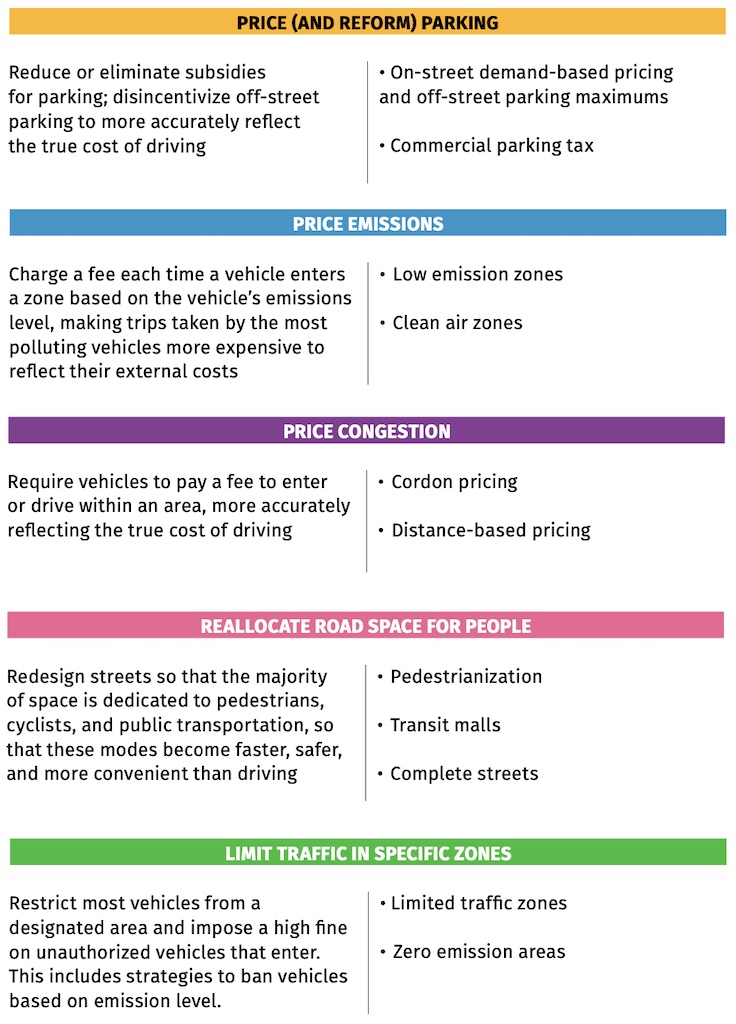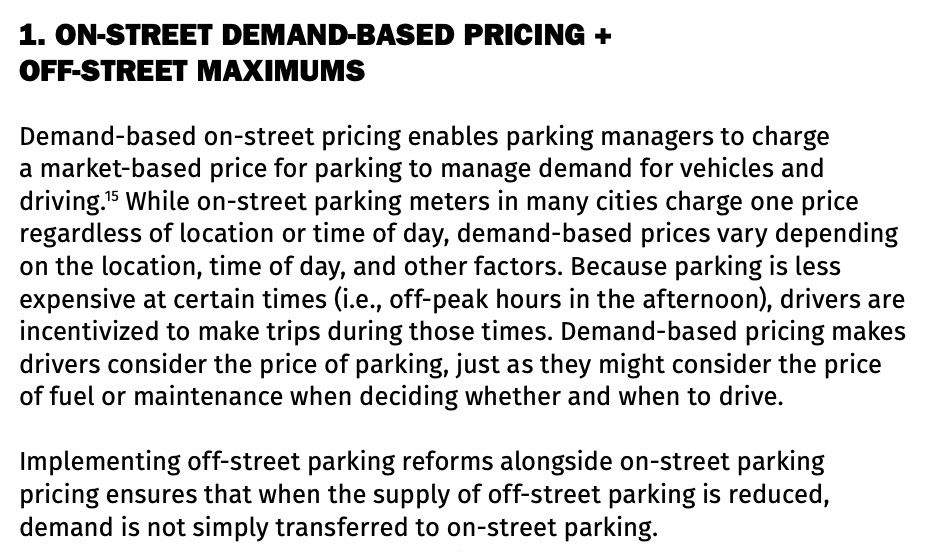The Institute for Transportation and Development Policy (ITDP) has published a new report Taming Traffic – strategies to reduce driving and prioritize sustainable transportation in cities.

The report points out that driving has high costs, both internal and external:

Consequences disproportionately affect vulnerable people, including children, seniors, people with low incomes, and people with disabilities:

Now is the time to implement traffic reduction strategies:

Cities need to use both “push” and “pull” measures, including pricing driving and parking:


A key recommendation is to combine demand responsive pricing on-street parking with restrictions on the construction of off-street parking – this way, when the supply of off-street parking is reduced, demand is not simply transferred to on-street parking:

The primary barrier to reform, especially in large, high income cities (such as Yarra or Melbourne) are constituencies of vehicle owners who wish to retain their subsidies.

Our view
Streets Alive Yarra applauds ITDP for researching the issues and publishing the report. We agree with the analysis that taming traffic is an issue of equity and social justice. We support the recommendations and urge local and state government to implement them, including:
- mandating a parking maximum for new construction across Yarra, of one parking bay per 100 m2 of development
- changing from flat rate pricing of on-street parking to demand responsive pricing
- converting free (time restricted) on-street parking to paid parking (with pay by phone)
- reallocating street space so that walking, cycling and public transport are safe and convenient
We note that implementing these reforms would not restrict anyone’s ability to drive to any property in Yarra – driving would still be available for those who need it. Driveability would actually improve, because if walking and cycling are safe and convenient, especially for short journeys, then more people will choose those modes and thus more space will be freed up for those who need to drive.
Published 5th April 2021
